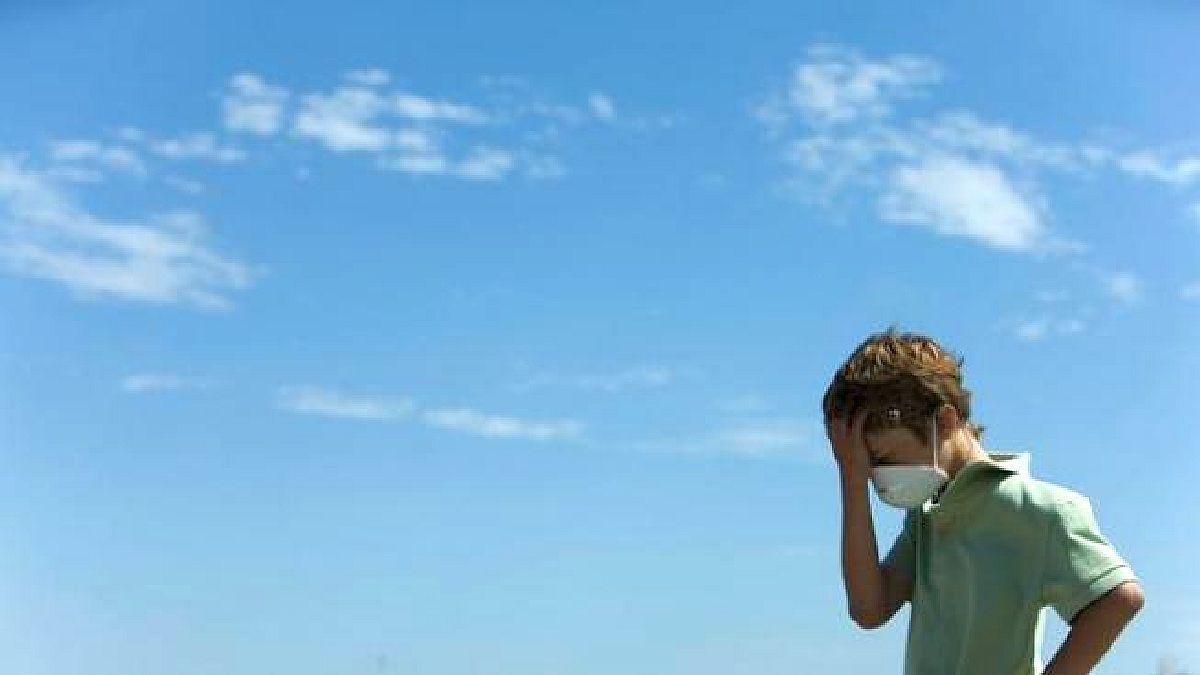On the streets of Pakistan’s second largest city, Lahore, a thick gray fog irritates the eyes and throat. At home, few people can afford air purifiers and families fear for their children, deprived of going to school due to record pollution this year.
Rafia Iqbal, a 38-year-old teacher who has to do online classes until November 17, is worried about the health of students and her own children, Sameen, 11, and Haider, 5.
“The children cough all the time, they have runny nose, fever. At school, most of the children were sick,” he explains to AFP.
For more than a week, the air quality index has reached unprecedented levels: In Lahore, with 14 million inhabitants, almost every day it has been above 1,000, when in reality at 300 the air is considered “dangerous” for humans.
In Multan, another large city in Punjab, on the border with India, the index exceeded 2,000, something never seen before.
Rafia Iqbal’s husband, Mohamed Safdar, a 41-year-old advertising man, admits he was shocked. When he settled in Lahore, he knew that every winter he would have to deal with smog – a fog mixed with smoke and suspended particles created by the fumes of cheap diesel, agricultural burning and the winter cold – but not to this extent.
“We did not expect such a level of contamination”says.
The World Health Organization (WHO) warns that prolonged exposure to this haze can cause stroke, heart disease, lung cancer and respiratory disorders, especially in children.
Living with pollution
The smog, Safdar continues, “makes life impossible: you can’t move, go out.” And furthermore, “it enters houses because we cannot completely close the windows and vents.”
Air purifiers are a luxury: the cheapest ones cost about $90, or the salary of a civil servant in this country, with more than 40% of the population below the poverty line. “Not everyone can afford one, we don’t have one”laments Safdar.
Confining Sameen and Haider in their small room is “a suffering” because they do not understand why they do not have the right to go out. To try to calm them down, parents have no choice but to “increase children’s time in front of screens,” he says.
“It’s like a covid but you can see it with the naked eye,” he says. In the face of such a danger, “measures should have been taken, it happens like this every year,” he laments.
“If a problem increases, it is because clearly the solution was not a good one,” he adds, alluding to the measure taken last year in Lahore with artificial rain to try to reduce fog. This year, water cannon trucks came out to spray the streets. But the pollution persists.
Every day, Dr. Qurat ul Ain witnesses the havoc in the emergency room of her hospital in Lahore.
He has worked at the establishment for 15 years but “this year, the smog is much worse than previous years and the number of patients hospitalized due to its effects is much higher,” he says.
On Tuesday, the Punjab government registered 900 patients admitted to the city of Lahore. In the emergency services, Dr. Qurat ul Din constantly sees patients arrive with coughs and red eyes due to pollution, many of them children, adults and young people who ride motorcycles without masks.
Source: Ambito
I am Pierce Boyd, a driven and ambitious professional working in the news industry. I have been writing for 24 Hours Worlds for over five years, specializing in sports section coverage. During my tenure at the publication, I have built an impressive portfolio of articles that has earned me a reputation as an experienced journalist and content creator.




